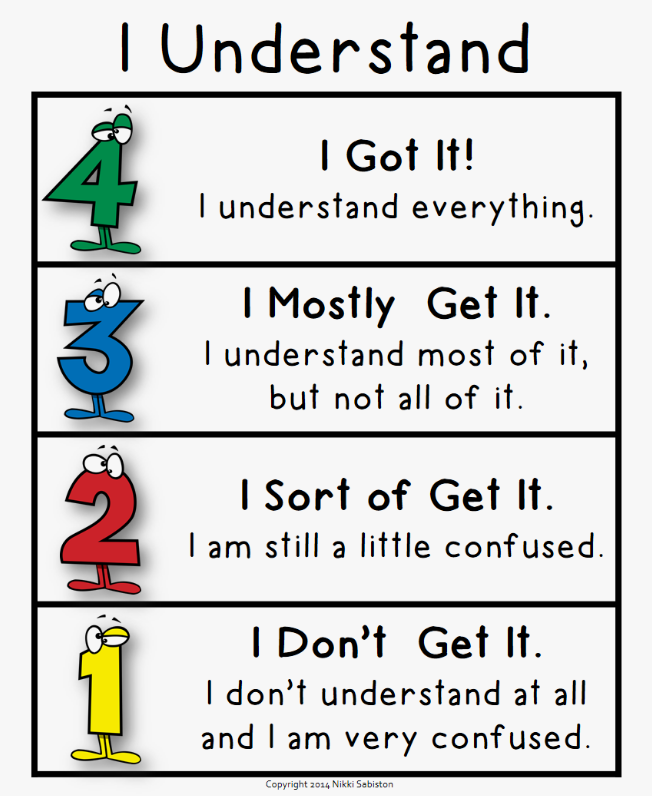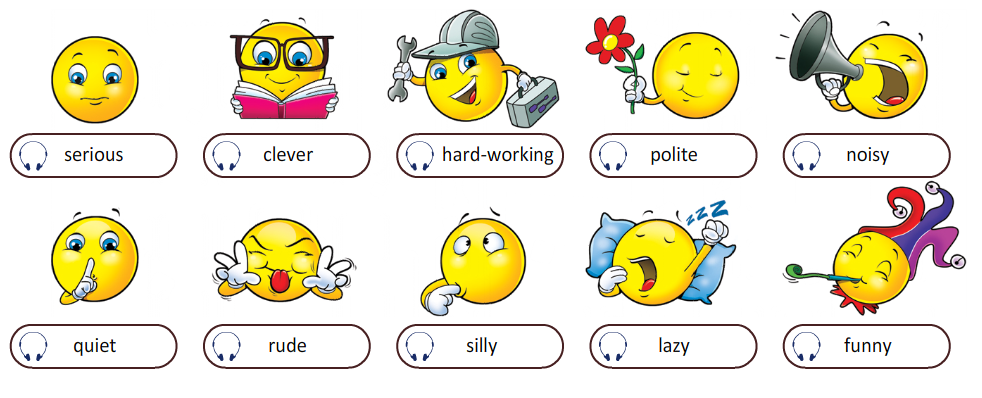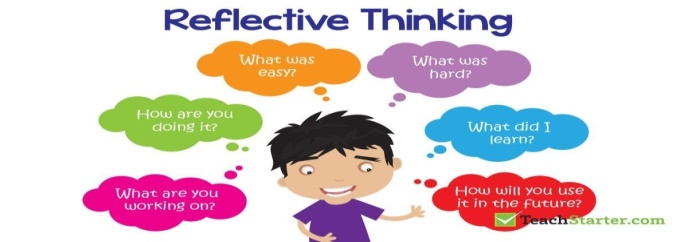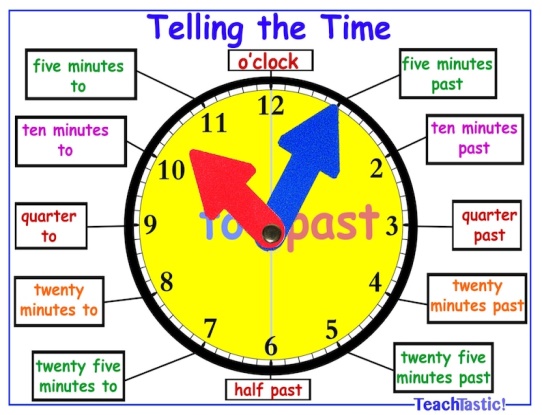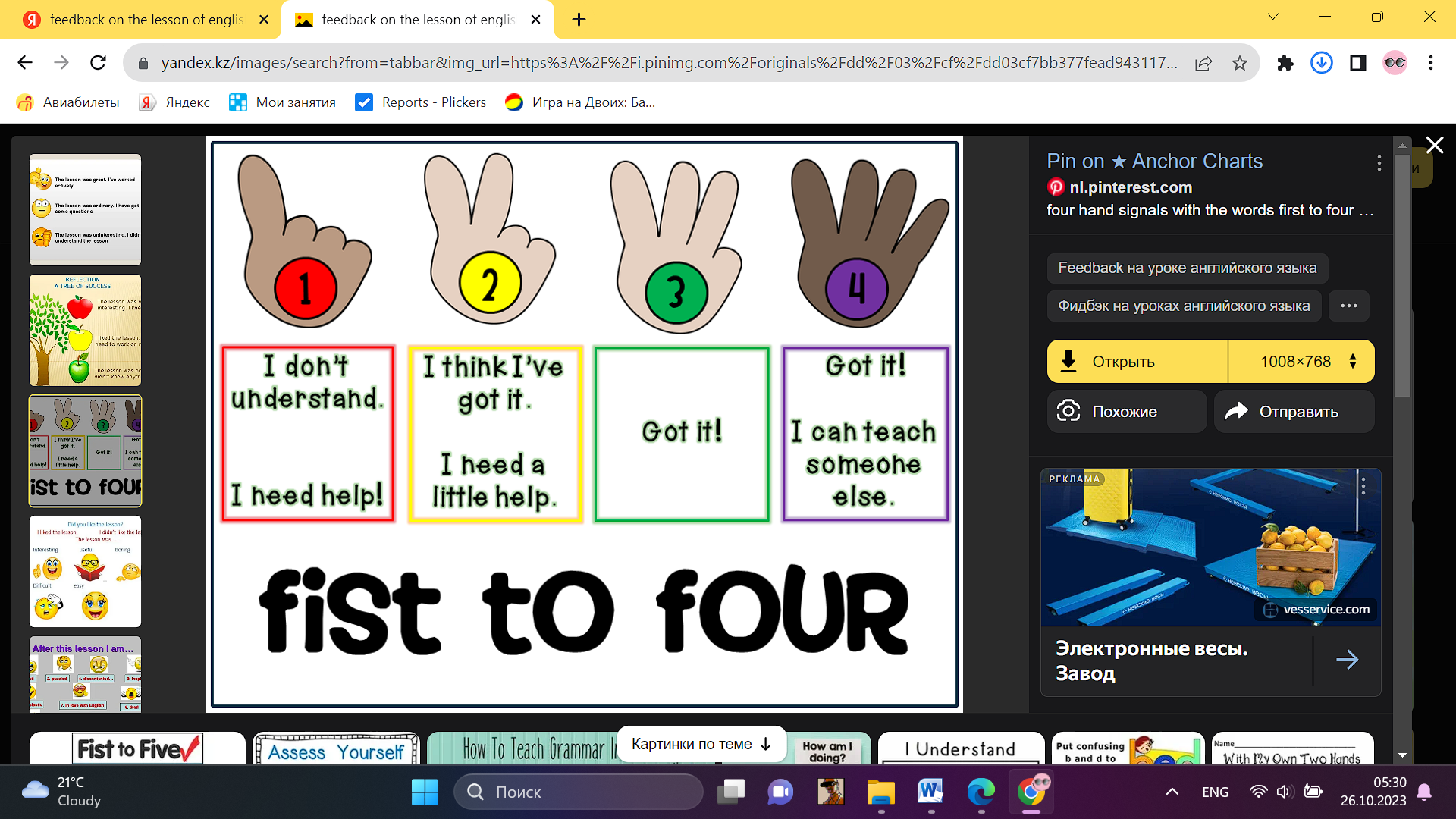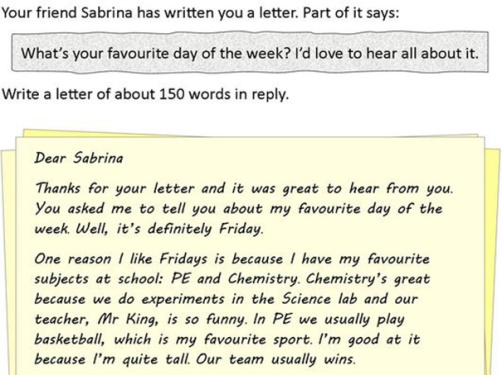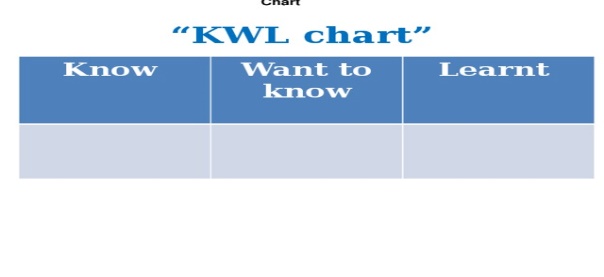Бұл материал сайт қолданушысы жариялаған. Материалдың ішінде жазылған барлық ақпаратқа жауапкершілікті жариялаған қолданушы жауап береді. Ұстаз тілегі тек ақпаратты таратуға қолдау көрсетеді. Егер материал сіздің авторлық құқығыңызды бұзған болса немесе басқа да себептермен сайттан өшіру керек деп ойласаңыз осында жазыңыз

Бонусты жинап картаңызға (kaspi Gold, Halyk bank) шығарып аласыз
1 жыл бойы тегін жүктеу мүмкіндігіне ие болыңыз!

жеңілдік
Excel-5 сынып кітабы бойынша құрылған қмж 2-тоқсан

Short term plan: term 2
|
Unit: 3 Values |
Lesson 25 |
||
|
Teacher name: |
|
||
|
Date: |
|
||
|
Grade: 5 |
Number present: |
absent: |
|
|
Lesson title |
Vocabulary: The family |
||
|
Learning objectives |
5.3.4.1 respond with limited flexibility at sentence level to unexpected comments on an increasing range of general and curricular topics 5.4.3.1 understand the detail of an argument on a limited range of familiar general and curricular topics 5.5.4.1 write with support a sequence of extended sentences in a paragraph to give basic personal information |
||
|
Lesson objectives |
Learners will be able to: - present vocabulary for family members - practise vocabulary for family members and present 's genitive/whose - practise 's genitive/whose |
||
|
Value links |
Family – Family values are moral and ethical principles of typical family life, including sacrificing for loved ones, putting your loved ones first, and keeping your loved ones at the centre of your thoughts and actions. |
||
|
Plan |
|||
|
Stages / Time |
Teachers actions |
Students actions |
Assessment criteria |
Resources |
|
Beginning of the lesson Warming-up
3 min. Pre-learning «Brainstorming» method 7 min. |
Organization moment : 1.Greeting. Ask about the weather. The teacher sets the lesson objectives, letting students know what to anticipate from the lesson. Warming up Where are you from? How old are you? What color is it? How many students are there in class? What day of the week today? Hand out the completed Progress Report Cards for the previous module and ask the pupils to file them in their language. Lead – In
|
The aim: To develop pupils speaking skills and create friendly atmosphere Efficiency: By wishing each other they feel better and feel the support of others Students of the class are listed. Students' attention is drawn to the lesson. Students say different words from the picture •Learners remember previous lesson vocabulary •Learners answer the questions What time do you get up every morning? What time do you go to school? What do you do after the lesson? |
The teacher to assess learners for their ability. “Good job! Well done!” Formative Assessment
Good job! Descriptor: - remembers the lesson passed Point 1 Assessment criteria make basic statements related to personal information, people and objects on familiar topics and a treasure hunt |
Pictures worksheet Picture |
|
Middle of the lesson Presentation part. 30 min
|
Ex:1 P:33 • Play the recording. Ss listen and repeat chorally or individually. • Elicit the L1 equivalents from Ss around the class. Ex: 2 P: 33 • Direct Ss' attention to the family tree and explain the task. Ss complete the task. Check Ss' answers. • Ss close their books. To present 's genitive/whose, start by pointing to a student and saying: Who's [Bill]? (He's [Mario's] brother/best friend, etc.) Write it on the board. Then point to a student's book and say: Whose book is this? (It's [Paula's].) • Write it on the board. Indicate some desks in the classroom and say: (Whose desks are these? They are the student's desks.) Write it on the board. Say then write: Who's the children's teacher? (I'm the children's teacher.) Ex: 3 P: 33 • Ask two students to read out the example exchange about Sue's family while the rest of the class follow in their books. Ss then ask and answer in pairs about Sue's family, using the pictures and •vocabulary in Exs. 1 and 2 to extend the activity. Monitor the activity around the class and help as necessary. Conclusion during the lesson some tasks differentiated by outcomes of the students and by their abilities. |
• Learners listen and repeat. ANSWERS Students’ own answer
• Learners look at Sue’s family tree. Use the words above tom complete the sentences. ANSWERS 2 cousin, her cousin 3 son, their son 4 grandma, her grandma 5 aunt, her aunt 6 nephew, his nephew 7 mum, their mum 8 father-in-law, his father-in-law • Learners ask and answer ANSWERS A: Who's John? B: He's Sue's brother. Whose dad is Sam? A: He's Kate and Claire's dad. Whose sister is Kate? B: She's Claire's sister. Who's Mark? A: He's Mary's husband. Who's Ann? B: She's Steve's wife, etc. |
Descriptor: -Listen and repeat T
Self assessment Differentiation: «Verbal support» method is used to help Ss use new words in the sentences. Descriptor: - attention to the family tree - complete the sentences Total: 3 point Descriptor: - read out the example - ask and answer in pairs Total: 3 point -Make CCQ questions Yes / No |
Card Worksheet Students book |
|
End of the lesson 5 min |
FEEDBACK Learners provide feedback on what they have learned at the lesson. Ex: P: Home task: Write the days |
|
Poster Success
|
|
Short term plan: term 2
|
Unit 3 Values |
Lesson 26 |
||
|
Teacher name: |
|
||
|
Date: |
|
||
|
Grade: 5 |
Number present: |
absent: |
|
|
Lesson title |
Reading: family and friends |
||
|
Learning objectives |
5.2.6.1 deduce meaning from context in short, supported talk on an increasing range of general and curricular topics 5.3.4.1 respond with limited flexibility at sentence level to unexpected comments on an increasing range of general and curricular topics |
||
|
Value links |
Loyalty – Loyalty might be a core personal value to you if you highly prize friends that are reliable and trustworthy. You might put your friends or chosen family first, always being there for them when they need you. |
||
|
Lesson objectives |
Learners will be able to: - introduce the topic and predict the content of the text - read for specific information |
||
|
Plan |
|||
|
Stages / Time |
Teachers actions |
Students actions |
Assessment criteria |
Resources |
|
Beginning of the lesson Warming-up
3 min Pre-learning «Brainstorming» method 7 min. |
Organization moment : 1.Greeting. Ask about the weather. The teacher sets the lesson objectives, letting students know what to anticipate from the lesson. Warming up Where are you from? How old are you? What color is it? How many students are there in class? What day of the week today? Ask a few pupils to stand up and stand in a row. Ask the rest of the class questions to revise the ordinals. Lead – In
|
The aim: To develop pupils speaking skills and create friendly atmosphere Efficiency: By wishing each other they feel better and feel the support of others Students of the class are listed. Students' attention is drawn to the lesson. Determines the topic and purpose of the lesson •Learners remember previous lesson vocabulary Students say different words from the picture Answer the question. |
The teacher to assess learners for their ability. “Good job! Well done!” Formative Assessment
Good job! Descriptor: - know daily routines vocabulary - know prepositions of place Point 1 Assessment criteria - Learners have met the learning objectives if they can talk about numbers and location; |
Pictures worksheet Student’s book |
|
Middle of the lesson Presentation part. 30 min
|
Ex:1 P:34 A)• Direct Ss to the picture and elicit what they know about the Flintstones and ask them to answer the question in the rubric. • Play the recording. Ss listen and follow the text in their books and find out Ex: 1 P: 34 B)• Draw Ss' attention to the picture again and allow them time to read through the text and use the descriptions in the text to identify the people in the picture. Check Ss' answers. Ex: 2 P: 34 • Direct Ss to the Word List to look up the meanings of the words in the Check these words box. • Allow Ss time to read the text again if necessary and answer the questions. Check Ss' answers. Ex: 3 P: 35 • Explain the task and then ask various Ss to present the Flintstones and the Rubbles to the rest of the class. |
a• Pupils look at the picture. Answer the question. ANSWERS The Flintstone family is not an ordinary family. It is a cartoon family from the Stone Age. b• Pupils name the people in the picture. ANSWERS Left to right - Pebbles, Wilma Flintstone, Fred Flintstone, Pearl Slaghoople, Barney Rubble, Bamm-Bamm, Betty Rubble • Pupils read again and answer the question. ANSWERS 1 3/Three 2 His favourite sports are bowling and golf 3 (She is) serious and modern. 4 (Her hobby is) baseball 5 (Dino is) Pebble's (pet) 6 He can play the piano and the drums. 7 (Wilma's best friend is) Betty Rubble 8 (He's) Barney and Betty Rubble's son Pupils use the picture. ANSWERS Fred Flintstone is tall and dark. He is noisy and funny. He likes eating, bowling and golf. Wilma Flintstone is Fred's wife. She has got red hair. She is serious. She likes housework. |
Descriptor: - know about the Flintstones - to answer the question Total: 2 point pupils are evaluated by collecting fish
Descriptor: - Pupils name the people in the picture Total: 1 point Descriptor: - read again and answer the question Total: 2 point Self assessment -Make CCQ questions Yes / No Total: 10 point |
Card Worksheet Students book |
|
End of the lesson 5 min |
FEEDBACK Learners provide feedback on what they have learned at the lesson. Ex: P: Home task: Write the days |
|
Poster Success
|
|
Short term plan: term 2
|
Unit 3 Values |
Lesson 27 |
||
|
Teacher name: |
|
||
|
Date: |
|
||
|
Grade: 5 |
Number present: |
absent: |
|
|
Lesson title |
Vocabulary: Character adjectives |
||
|
Learning objectives |
5.3.4.1 respond with limited flexibility at sentence level to unexpected comments on an increasing range of general and curricular topics 5.4.1.1 understand the main points in a limited range of short simple texts on general and curricular topics |
||
|
Lesson objectives |
Learners will be able to: - present character adjectives and opposite - practise character adjectives |
||
|
Value links |
Fairness – If you value fairness, you might be highly sensitive to situations at school or in the workplace where a teacher or a peer has exhibited favoritism or allowed someone to get away with living by a different set of rules to everyone else. |
||
|
Plan |
|||
|
Stages / Time |
Teachers actions |
Students actions |
Assessment criteria |
Resources |
|
Beginning of the lesson Warming-up
3 min Pre-learning «Brainstorming» method 7 min. |
Organization moment : 1.Greeting. Ask about the weather. The teacher sets the lesson objectives, letting students know what to anticipate from the lesson. Warming up Where are you from? How old are you? What color is it? How many students are there in class? What day of the week today? revise the vocabulary from the previous Lead – In
|
. The aim: To develop pupils speaking skills and create friendly atmosphere Efficiency: By wishing each other they feel better and feel the support of others Students of the class are listed. Students' attention is drawn to the lesson. • Learners remember previous lesson vocabulary Determines the topic and purpose of the lesson Students say different words from the picture |
The teacher to assess learners for their ability. “Good job! Well done!” Formative Assessment
Good job! Descriptor: - can tell the time Point 1 Assessment criteria - Learners have met the learning objectives if they can talk about persons character |
Pictures worksheet Picture |
|
Middle of the lesson Presentation part. 30 min
|
Ex:4 P: 35 • Play the recording. Ss listen and repeat chorally or individually. • Read the Study Skills box aloud and explain what an opposite is and give some examples (e.g., tall - short, black-white, big - small, etc). • Allow Ss time to find the opposites and check with their partner, then check answers with the class. Ex: 5 P: 35 • Explain the task and give Ss time to complete it. • Check Ss' answers around the class. Ex: 6 P: 35 • Explain the task and go through the example. • Ss work in pairs and complete the task. Monitor the activity around the class and then choose various Ss to mime adjectives for the class. Ex: 8 P: 35 • Explain the task and allow Ss time to complete it, then check Ss' answer Conclusion during the lesson some tasks differentiated by outcomes of the students and by their abilities. |
•Pupils listen and read. Find opposites. ANSWERS funny-serious clever - silly quiet-noisy polite - rude strong-wear •Pupils complete the sentences ANSWERS 1 quiet 2 hardworking 3 ugly 4 clever 5 weak 6 rude •Pupils use the adjectives to make sentences about your family and friends. Mime the adjective ANSWERS My brother is very silly - mimes silly. My mum is very quiet - mimes quiet. etc. •Pupils write in the correct order ANSWERS 1 Jane is very funny. 2 He is a very quiet boy. 3 They are noisy. S Steve and Mary are very serious. 4 Matt is a clever student. |
Descriptor: - find the opposites Total: 1 point
Descriptor: - understand general idea - complete the sentences Total: 1 point
Descriptor: - work in pairs - use the adjectives to make sentence Total: 1 point Descriptor: -read and understand general idea - write in the correct order -Make CCQ questions Yes / No pupils are evaluated by collecting pencils |
Card Worksheet |
|
End of the lesson 5 min |
FEEDBACK Learners provide feedback on what they have learned at the lesson. Ex: Home task: |
|
Poster Success
|
|
Short term plan: term 2
|
Unit 3: Values |
Lesson 28 |
||
|
Teacher name: |
|
||
|
Date: |
|
||
|
Grade: 5 |
Number present: |
absent: |
|
|
Lesson title |
Use of English: Present Simple |
||
|
Learning objectives |
5.2.6.1 deduce meaning from context in short, supported talk on an increasing range of general and curricular topics 5.3.4.1 respond with limited flexibility at sentence level to unexpected comments on an increasing range of general and curricular topics |
||
|
Lesson objectives |
Learners will be able to: - present the present simple affirmative and understand its use for routines/habits, repeated actions and permanent states -consolidate the spelling rules of the third person singular in the present simple -practise using the present simple to talk about daily routines |
||
|
Value links |
Honesty – You may highly value telling people the truth. This one gets tricky when being honest can be hurtful to others. So, a person who really puts honesty first might be the sort of person who will tell the truth even if it hurts to do so. |
||
|
Plan |
|||
|
Stages / Time |
Teachers actions |
Students actions |
Assessment criteria |
Resources |
|
Beginning of the lesson Warming-up
3 min Pre-learning «Brainstorming» method 7 min. |
Organization moment : 1.Greeting. Ask about the weather. The teacher sets the lesson objectives, letting students know what to anticipate from the lesson. Warming up Where are you from? How old are you? What color is it? How many students are there in class? What day of the week today? revise the language from the previous lesson Lead – In
|
The aim: To develop pupils speaking skills and create friendly atmosphere Efficiency: By wishing each other they feel better and feel the support of others Students of the class are listed. Students' attention is drawn to the lesson. • Learners talk about daily routines previous lesson vocabulary Determines the topic and purpose of the lesson Students say different words from the picture |
The teacher to assess learners for their ability. “Good job! Well done!” Formative Assessment
Good job! Descriptor: - talk about daily routines Point 1 Assessment criteria - Learners have met the learning objectives if they can talk about natural features |
Pictures worksheet Student’s book |
|
Middle of the lesson Presentation part. 30 min
|
Ex:1 P:36 • Present the present simple. Say: I live in Madrid. Write it on the board. Underline live and explain that this verb is in the present simple. Point to a S and say: You live in Madrid. Then write it on the board. Underline live. Point to a male S and say: He lives in Madrid. Then write it on the board. Underline lives. Explain that the third person singular usually takes an -s. Present the other persons in the same way. • Explain the spelling rules of the third person singular by writing the verbs miss, finish, watch, mix, go, cry on the board. Stress the difference between the spelling of play and cry. Ex: 2 P: 36 • Explain the task and any unknown verbs. Alternatively, Ss can look up the verbs in the Word List or in their dictionaries. • Allow Ss a few minutes to complete the task and check Ss' answers on the board. Ex: 3 P: 36 • Explain the task. Draw Ss' attention to the diagram and direct Ss to picture 1 and read the example sentence aloud. • Go through the phrases in the box or ask Ss to look up the meanings of these phrases in the Word List, then tell Ss to make sentences for each of the activities 2-11 in the diagram using these phrases. Ex: 3 P: 36 • Ss work in pairs and tell each other their daily routines. Monitor the activity around the class and then ask some Ss to tell their daily routine to the class. Ask Ss to use then, after that to link their idea. Conclusion during the lesson some tasks differentiated by outcomes of the students and by their abilities. |
•Pupils read the table. Say the examples in your language. ANSWERS Students’ own answer •Pupils write the 3rd person singular. ANSWERS 2 he leaves 3 he watches 4 he runs 5 he says 6 he works 7 he goes 8 he washes •Pupils look at the pictures. What does Kevin do in the morning, afternoon, evening? ANSWERS 2 Kevin has breakfast in the morning. 3 Kevin goes to school in the morning. 4 Kevin has lunch in the afternoon. 5 Kevin does his homework in the afternoon. 6 Kevin goes to the gym in the afternoon. 7 Kevin plays computer games in the afternoon. 8 Kevin meets his friends in the afternoon. 9 Kevin has dinner in the evening. 10 Kevin watches TV in the evening. 11 Kevin goes to bed in the evening. •Pupils tell your partner. What about you? ANSWERS I get up early in the morning. Then, I have breakfast. After that I go to school. In the afternoon I do my homework and play on my computer. In the evening I have dinner and then I watch a DVD. Then, I go to bed. |
Descriptor: - read the table -know the 3rd form Total: 2 point
Descriptor: - write the 3rd person singular Total: 2 point pupils are evaluated by collecting colour pencils Descriptor: - say about Kevin’s daily routine Total: 3 point
Descriptor: - tell your partner about you Total: 3 point
-Make CCQ questions Yes / No Total: 10 point
|
Card Worksheet Students book |
|
End of the lesson 5 min |
FEEDBACK Learners provide feedback on what they have learned at the lesson. Ex: Home task: |
|
Poster Success
|
|
Short term plan: term 2
|
Unit: 3 Values |
Lesson 29 |
||
|
Teacher name: |
|
||
|
Date: |
|
||
|
Grade:5 |
Number present: |
absent: |
|
|
Lesson title |
Use of English: Present Simple (negative) |
||
|
Learning objectives |
5.4.2.1 understand with little support specific information and detail in short, simple texts on a limited range of general and curricular topics 5.5.3.1 write with support factual descriptions at text level which describe people, places and objects |
||
|
Lesson objectives |
Learners will be able to: - present the present simple negative/interrogative -practise using the present simple in the negative -practise like/love/hate + -ing |
||
|
Value links |
Generosity – This may be a core value of yours if you cherish people who will give their time and resources to people in need. You may consider yourself to be a generous person if you find joy and meaning in giving to others. |
||
|
Plan |
|||
|
Stages / Time |
Teachers actions |
Students actions |
Assessment criteria |
Resources |
|
Beginning of the lesson Warming-up
3 min Pre-learning «Brainstorming» method 7 min. |
Organization moment : 1.Greeting. Ask about the weather. The teacher sets the lesson objectives, letting students know what to anticipate from the lesson. Warming up Where are you from? How old are you? What color is it? How many students are there in class? What day of the week today? Revise the vocabulary from the previous lesson Lead – In
|
The aim: To develop pupils speaking skills and create friendly atmosphere Efficiency: By wishing each other they feel better and feel the support of others Students of the class are listed. Students' attention is drawn to the lesson. • Learners talk about days of the week previous lesson vocabulary Determines the topic and purpose of the lesson Students say different words from the picture |
The teacher to assess learners for their ability. “Good job! Well done!” Formative Assessment
Good job! Descriptor: - talk about days of the we Total: 1 point Assessment criteria - Learners have met the learning objectives if they can talk about your last I holidays. |
Pictures worksheet picture |
|
Middle of the lesson Presentation part. 30 min
|
Ex:6 P:37 • Ss close their books. Write on the board: I don't like Mondays. She doesn't like Mondays. Underline / don't in the first sentence and She doesn't in the second sentence. Explain that we use I/you/we/they do not/don't and he/she/it does not/doesn't to form the negative of the present simple. Point out that the main verb is the same for all person • Then write on the board: Do I like Mondays? No, I don't. Does she like Mondays? No, she doesn't. Explain that we use Do I/you/we/they and Does he/she/it to form questions in the present simple. Focus Ss' attention on the position of do/does (before the personal pronoun). We answer in the short form with Yes/No, I/you/we/they/do/don't and he/she/it does/doesn't. Ex: 7 P: 37 • Allow Ss time to complete the sentences and check Ss' answers on the board. Ex: 8 P: 37 • Explain the task and allow Ss time to complete the sentences. Check Ss' answers. Ex: 9 P: 37 • Explain the task. Ask a pair of Ss to read the example aloud. • Ss do the task in pairs. Monitor the activity around the class and then ask some pairs to act out their exchanges in front of the class. Ex: 10 P: 37 Explain the task and read out the example. • Ss complete the task and then check Ss' answers on the board. Conclusion during the lesson some tasks differentiated by outcomes of the students and by their abilities. |
• Pupils read the table. ANSWERS T: Do you like sport? S1: Yes, I do./ No, I don't. T: Does your mum work? $2: Yes, she does./ No, she doesn't. T: Do you live in Spain? S3: Yes, we do. etc • Pupils fill in: don’t or doesn’t ANSWERS 1 doesn't 2 doesn't 3 don't 4 doesn't S don't 6 doesn't • Pupils fill in: do, does, don’t or doesn’t ANSWERS 1 Do, do 2 Do, do 3 Does, doesn't 5 Does, doesn't 4 Do, don't • Pupils ask and answer ANSWERS 2 Do, Yes, I do. 3 Does, Yes, he does. 4 Do, No, I don't. 5 Do, Yes, I do. 6 Do, No, I don't. 7 Does, Yes, she does • Pupils say these sentences in your language ANSWERS 2 getting up early 3 playing golf 4 doing housework 5 playing baseball 6 going to the gym 7 playing computer games 8 making dinner |
Descriptor: - read the table Total: 3 point Descriptor: -fill the gaps Total: 2 point
Self assessment Descriptor: - fill the gaps Total: 2 point Descriptor: - ask and answer Total: 2 point pupils are evaluated by collecting fish -Make CCQ questions Yes / No Total: 10 point |
Card Worksheet Vocabulary card |
|
End of the lesson 5 min |
FEEDBACK Learners provide feedback on what they have learned at the lesson. Ex: Home task: |
|
Poster Success
|
|
Short term plan: term 2
|
Unit 3 Values |
Lesson 30 |
||
|
Teacher name: |
|
||
|
Date: |
|
||
|
Grade: 5 |
Number present: |
absent: |
|
|
Lesson title |
Vocabulary: Qualities of a friend |
||
|
Learning objectives |
5.2.8.1 understand supported narratives, including some extended talk, on an increasing range of general and curricular topics 5.3.5.1 keep interaction going in basic exchanges on a growing range of general and curricular topics 5.4.2.1 understand with little support specific information and detail in short, simple texts on a limited range of general and curricular topics |
||
|
Lesson objectives |
Learners will be able to: - present and practise vocabulary of qualities in a friend - listen and read for specific information - read for specific information |
||
|
Value links |
Generosity – This may be a core value of yours if you cherish people who will give their time and resources to people in need. You may consider yourself to be a generous person if you find joy and meaning in giving to others. |
||
|
Plan |
|||
|
Stages / Time |
Teachers actions |
Students actions |
Assessment criteria |
Resources |
|
Beginning of the lesson Warming-up
3 min Pre-learning «Brainstorming» method 7 min. |
Organization moment : 1.Greeting. Ask about the weather. The teacher sets the lesson objectives, letting students know what to anticipate from the lesson. Warming up Where are you from? How old are you? What color is it? How many students are there in class? What day of the week today? Revise the language of the previous lesson. Lead – In
|
The aim: To develop pupils speaking skills and create friendly atmosphere Efficiency: By wishing each other they feel better and feel the support of others Students of the class are listed. Students' attention is drawn to the lesson. Determines the topic and purpose of the lesson • Learners talk about favourite dayprevious lesson vocabulary Students say different words from the picture and count one to hundred |
The teacher to assess learners for their ability. “Good job! Well done!” Formative Assessment
Good job! Descriptor: - talk about favourite day Total: 1 point Assessment criteria - Learners have met the learning objectives if they can talk about natural wonders. |
Pictures worksheet Student’s book |
|
Middle of the lesson Presentation part. 30 min |
Ex:1 P:38 • Direct Ss attention to the images with words describing qualities in a friend. • Play the recording. Ss listen and repeat chorally or individually. • Elicit meaning of any unknown words. Ex: 2 P: 38 • Draw the Ss attention to the blog, and the question in the rubric. • Play the recording. Ss listen and read to find the specific information. • Check S's answers around the class. Ex: 3 P: 38 • Allow Ss time to read the text again and answer the questions. • Direct Ss to the Word List to look up the meanings of the words in the Check these words box. • Check Ss' answers. Conclusion during the lesson some tasks differentiated by outcomes of the students and by their abilities. |
Pupils listen and repeat ANSWERS Student’s own answer Pupils look at Inkar’s blog entry. What are her best friends like? ANSWERS Inkar's best friends are Madina and Diana and they are fun. They also think of exciting things to do. They are kind, too. Pupils read the text again and mark the sentences T (true), F (false) or Ds (doesn’t say) ANSWERS 1 DS 2 F 3 T 4 F 5 F 6 T |
Descriptor: - identify meaning of any unknown words. Total: 2 point
Self assessment Descriptor: - find the specific information Total: 3 point Descriptor: - read the text again and mark the sentences Total: 3 point pupils are evaluated by collecting colour pencils -Make CCQ questions Yes / No Total: 10 point |
Card Worksheet Students book |
|
End of the lesson 5 min |
FEEDBACK Learners provide feedback on what they have learned at the lesson. Ex: Home task: |
|
Poster Success
|
|
Short term plan: term 2
|
Unit 3: Values |
Lesson 31 |
||
|
Teacher name: |
|
||
|
Date: |
|
||
|
Grade: 5 |
Number present: |
absent: |
|
|
Lesson title |
Speaking: Talking about friends |
||
|
Learning objectives |
5.2.8.1 understand supported narratives, including some extended talk, on an increasing range of general and curricular topics 5.3.5.1 keep interaction going in basic exchanges on a growing range of general and curricular topics 5.5.3.1 write with support an e - mail about a special day |
||
|
Lesson objectives |
Learners will be able to: - personalise a topic by asking about a friend -present personal information to the class -listen for specific information |
||
|
Value links |
Integrity – Integrity is the quality of having strong moral principles. So, a person with integrity will always act with honesty and adhere to their own moral code regardless of what others do. |
||
|
Plan |
|||
|
Stages / Time |
Teachers actions |
Students actions |
Assessment criteria |
Resources |
|
Beginning of the lesson Warming-up
3 min Pre-learning «Brainstorming» method 7 min. |
Organization moment : 1.Greeting. Ask about the weather. The teacher sets the lesson objectives, letting students know what to anticipate from the lesson. Warming up Where are you from? How old are you? What color is it? How many students are there in class? What day of the week today? Revise the language of the previous lesson. Lead – In
|
The aim: To develop pupils speaking skills and create friendly atmosphere Efficiency: By wishing each other they feel better and feel the support of others Students of the class are listed. Students' attention is drawn to the lesson. • Learners write the numbers from previous lesson Determines the topic and purpose of the lesson Students say different words from the picture |
The teacher to assess learners for their ability. “Good job! Well done!” Formative Assessment
Good job! Descriptor: -know key phrases - can make sentence - know vocabulary of previous lesson Total: 1 point Assessment criteria - Learners have met the learning objectives if they can: To talk about natural features and natural wonders |
Pictures worksheet Student’s book |
|
Middle of the lesson Presentation part. 30 min |
Ex:4 P:39 • Explain the task. • Allow Ss time to fill in the information about a friend. • Ss work in pairs to ask and answer the questions. Ex: 5 P: 39 • Ask Ss to tell the class about their best friend. • Repeat around the class until Ss have all had a chance to present. Ex: 6 P: 39 • Explain the task. • Play the CD. • Ss listen and match the names with the activities. Check Ss' answers. Ex: 7 P: 39 • Explain the task. Allow Ss time to complete it. Alternatively assign it as HW. Then ask some students to read their blog post aloud to the class. Evaluate Ss' performance. Check for: -grammar mistakes -punctuation - spelling mistakes - word order Conclusion during the lesson some tasks differentiated by outcomes of the students and by their abilities. |
Pupils complete the sentences about your best friend. ANSWERS 1 My best friend's name is Anya. 2 She is my best friend because we have a lot of fun together. She is honest and loyal. 3 We like going to the cinema and knowing all about film stars. Pupils tell the class about your best friend ANSWERS My best friend's name is Artyom. He is my best friend because we like doing things together. He is friendly and fun. We like playing football and going to see football matches Pupils match the people to the activities ANSWERS 1 E 2 G 3 C 4 B 5 A Pupils post your comment to Inkar’s blog about your best friend. ANSWERS Hi Inkar, My best friend is Artyom. We are in the same class at school. He's really friendly and fun to be with. He's also very loyal and helps me when I need help and that's great too! Aldiyar |
Descriptor: - fill in the information about a friend Total: 2 point
Self assessment Descriptor: - tell the class about their best friend. Total: 3 point Descriptor: - match the names with the activities Total: 2 point
pupils are evaluated by collecting fish
-Make CCQ questions Yes / No |
Card Worksheet Students book |
|
End of the lesson 5 min |
FEEDBACK Learners provide feedback on what they have learned at the lesson. Ex: Home task: |
|
Poster Success
|
|
Short term plan: term 2
|
Unit 3: Values |
Lesson 32 |
||
|
Teacher name: |
|
||
|
Date: |
|
||
|
Grade: 5 |
Number present: |
absent: |
|
|
Lesson title |
Everyday English: Telling the time |
||
|
Learning objectives |
5.2.8.1 understand supported narratives, including some extended talk, on an increasing range of general and curricular 5.3.3.1 give an opinion at sentence level on a limited range of general and curricular topics 5.6.6.1 use prepositions, basic personal and demonstrative pronouns, have to on a limited range of familiar general and curricular topics |
||
|
Lesson objectives |
Learners will be able to: - practise telling the time - identify the context of a dialogue - read for specific information |
||
|
Value links |
Perseverance – People who value perseverance will work through adversity and be determined to get a result. This is a great treat for employees and entrepreneurs alike. |
||
|
Plan |
|||
|
Stages / Time |
Teachers actions |
Students actions |
Assessment criteria |
Resources |
|
Beginning of the lesson Warming-up
3 min Pre-learning «Brainstorming» method 7 min. |
Organization moment : 1.Greeting. Ask about the weather. The teacher sets the lesson objectives, letting students know what to anticipate from the lesson. Warming up Where are you from? How old are you? What color is it? How many students are there in class? What day of the week today?
|
The aim: To develop pupils speaking skills and create friendly atmosphere Efficiency: By wishing each other they feel better and feel the support of others Students of the class are listed. Students' attention is drawn to the lesson. • Learners talk about favourite day previous lesson vocabulary Determines the topic and purpose of the lesson Students say different words from the picture |
The teacher to assess learners for their ability. “Good job! Well done!” Formative Assessment
Good job! Descriptor: -know key phrases - can make sentence - know vocabulary of previous lesson Total: 1 point Assessment criteria - Learners have met the learning objectives if they can talk about four walls |
Pictures worksheet Student’s book |
|
Middle of the lesson Presentation part. 30 min |
Ex:1 P:40 • Read through the table eliciting/explaining any unknown words. • Choose two Ss to read the example aloud. Allow Ss time to do the task in closed pairs. • Ask some pairs to act out their exchanges Ex: 2 P: 40 • Read the sentences aloud and elicit the L1 equivalents. (Ss' own answers) • Elicit what the dialogue is about (making plans to play a sport). • Play the recording. Ss listen and follow the text in their books and find out Ex: 3 P: 40 • Allow Ss time to read the dialogue again and answer the questions. Check Ss' answers Ex: 4 P: 40 • Read the phrases aloud. Refer Ss back to the dialogue and elicit the synonymous ones from various Ss around the class. Conclusion during the lesson some tasks differentiated by outcomes of the students and by their abilities. |
Pupils use the table and the clock faces to ask each other the time. ANSWERS A: What's the time, please? B: It's four o'clock. A: Have you got the time, please? B: It's ten to four. A: What time is it, please? B: It's twenty to three. A: What's the time, please? B: It's half past eight. Pupils these sentences are from a dialogue between two friends. ANSWERS Student’s own answer Pupils read the dialogue again and answer these questions ANSWERS 1 Helen wants to practise basketball. 2 From half past three to seven o'clock. 3 At 4:30/half past four Pupils find phrases in the dialogue which mean: ANSWERS 1 Yes, that's fine. 2 I think so. 3 What time does the court open? 4 See you there! |
Descriptor: - use the table - ask each other the time Total: 2 point
Descriptor: - read the sentences aloud Total: 3 point Descriptor: - read the dialogue again - answer the questions. Total: 3 point
pupils are evaluated by collecting colour pencils Descriptor: - find phrases in the dialogue which mean -Make CCQ questions Yes / No Total: 10 point |
Card Worksheet Students book |
|
End of the lesson 5 min |
FEEDBACK Learners provide feedback on what they have learned at the lesson. Ex: Home task: |
|
Poster Success
|
|
Short term plan: term 2
|
Unit |
Lesson 33 |
||
|
Teacher name: |
|
||
|
Date: |
|
||
|
Grade: 5 |
Number present: |
absent: |
|
|
Lesson title |
Across cultures: Women’s day |
||
|
Learning objectives |
5.2.8.1 understand supported narratives, including some extended talk, on an increasing range of general and curricular topics 5.4.1.1 understand the main points in a limited range of short simple texts on general and curricular topics 5.3.3.1 give an opinion at sentence level on a limited range of general and curricular topics |
||
|
Lesson objectives |
Learners will be able to: - predict the content of a text -read for specific information -write about another celebration in your country |
||
|
Value links |
Self-Discipline – If you value self-discipline, you might be a person who wakes up early, exercises daily, and doesn’t get distracted by vices. |
||
|
Plan |
|||
|
Stages / Time |
Teachers actions |
Students actions |
Assessment criteria |
Resources |
|
Beginning of the lesson Warming-up
3 min Pre-learning «Brainstorming» method 7 min. |
Organization moment : 1.Greeting. Ask about the weather. The teacher sets the lesson objectives, letting students know what to anticipate from the lesson. Warming up Where are you from? How old are you? What color is it? How many students are there in class? What day of the week today? Write some of the words from the previous lesson with some letters missing, Lead – In
|
“The wish lamp” method helps to start the lesson with good wishes to each other. The aim: To develop pupils speaking skills and create friendly atmosphere Efficiency: By wishing each other they feel better and feel the support of others Students of the class are listed. Students' attention is drawn to the lesson. • Learners talk about rooms previous lesson vocabulary Determines the topic and purpose of the lesson Students say different words from the picture |
The teacher to assess learners for their ability. “Good job! Well done!” Formative Assessment
Good job! Descriptor: -know key phrases - can make sentence - know vocabulary of previous lesson Total: 1 point Assessment criteria - Learners have met the learning objectives if they can: Talk about celebration in your country |
Pictures worksheet Student’s book |
|
Middle of the lesson Presentation part. 30 min |
Ex:1 P:41 • Choose various Ss to read the title and the headings. •Elicit Ss' ideas as to what the text is about. Ex: 2 P: 41 • Allow Ss some time to read the text again and answer the questions. • Direct Ss to the Word List to look up the meanings of the words in the Check these words box. • Check Ss' answers. Ex: 3 P: 41 • Allow Ss some time to complete the sentences about themselves then ask various Ss around the class to read their sentences aloud. Ex: 4 P: 41 • Explain the task and allow Ss some time to write about a celebration in their country. Remind Ss to use the texts in Ex. 1 as a model. • Alternatively, assign as HW. Ask various Ss to read their text aloud to the class. Conclusion during the lesson some tasks differentiated by outcomes of the students and by their abilities. |
• Pupils read the title and the headings in the text. ANSWERS The text is about special days. • Pupils read the text and mark the sentences T (true) or F (false) ANSWERS 1 T 2 F 3 F 4 T 8th March is a day off work in Kazakhstan. Some Canadian children write poems for their fathers on Father's Day. • Pupils complete the sentences about you. ANSWERS 1 she's very clever 2 he's very strong 3 he's/she's very funny • Pupils collect information about another day in your country. ANSWERS The First President Day celebrates the first president of the Republic of Kazakhstan, Nursultan Nazarbayev. On this day, Kazakhstanis have a day off work. It is usually on smal December 1, or the nearest Monday. There are special events to celebrate the achievements of the President and of the country since Independence. |
Descriptor: - read the title Total: 2 point
Self Assessment Descriptor: - read the text again - answer the questions. Total: 2 point Descriptor: - complete the sentences about themselves Total: 2 point
pupils are evaluated by collecting places where they live Descriptor: - collect information about another day Total: 2 point -Make CCQ questions Yes / No Total: 10 point |
Card Worksheet Students book |
|
End of the lesson 5 min |
FEEDBACK Learners provide feedback on what they have learned at the lesson. Ex: Home task: |
|
Poster Success
|
|
Short term plan: term 2
|
Unit 3 Values |
Lesson 34 |
||
|
Teacher name: |
|
||
|
Date: |
|
||
|
Grade: 5 |
Number present: |
absent: |
|
|
Lesson title |
Across curriculum: literature |
||
|
Learning objectives |
5.4.2.1 understand with little support specific information and detail in short, simple texts on a limited range of general and curricular topics 5.3.5.1 keep interaction going in basic exchanges on a growing range of general and curricular topics 5.5.3.1 write with support factual descriptions at text level which describe a friendship relationship |
||
|
Lesson objectives |
Learners will be able to: - introduce the topic through pictures- -listen and read for specific information -learn about rhyme |
||
|
Value links |
Humility – You might highly value humility if you find yourself disgusted by people who are arrogant or braggadocious, and instead find yourself gravitating to people who are always expressing their gratefulness for the blessings in their life. |
||
|
Plan |
|||
|
Stages / Time |
Teachers actions |
Students actions |
Assessment criteria |
Resources |
|
Beginning of the lesson Warming-up
3 min Pre-learning «Brainstorming» method 7 min. |
Organization moment : 1.Greeting. Ask about the weather. The teacher sets the lesson objectives, letting students know what to anticipate from the lesson. Warming up Where are you from? How old are you? What color is it? How many students are there in class? What day of the week today? Ask a pupil to mime an action associated with one of the places from the previous lesson. Ask the rest of the class to guess which place it is. Demonstrate this yourself first Teacher: (mimes posting a letter) Lead – In
|
The aim: To develop pupils speaking skills and create friendly atmosphere Efficiency: By wishing each other they feel better and feel the support of others Students of the class are listed. Students' attention is drawn to the lesson. Learners find mime an action associated with one of the places Determines the topic and purpose of the lesson Students say different words from the picture |
The teacher to assess learners for their ability. “Good job! Well done!” Formative Assessment
Good job! Descriptor: -know key phrases - can make sentence - know vocabulary of previous lesson Total: 1 point Assessment criteria - Learners have met the learning objectives if they can: Talk about literature |
Pictures worksheet Student’s book |
|
Middle of the lesson Presentation part. 30 min |
Ex:1a P:42 • Direct Ss' attention to the pictures and read the headings aloud. Elaborate on each type of family and ask various Ss to say what sort of family theirs is. Ex: 1b P: 42 • Play the recording. Ss listen and follow the text in their books and answer the question in the rubric. • Direct Ss to the Word List to look up the meanings of the words in the Check these words box. • Check Ss' answers. Ex: 2 P: 42 • Explain the task and test Ss' understanding of rhyme by saying a word e.g., day and asking Ss to say a rhyming word e.g., say. • Elicit the rhyming words in the second verse and an answer to the question in the rubric. Check Ss' answers. • As an extension ask Ss to recite the poem. Ex: 3 P: 42 • Ask Ss to think of reasons their family is important to them. Invite them to use vocabulary from the module, Ss read their sentences to the class. |
• Pupils look at the pictures. ANSWERS Student’s own answer . • Pupils listen to and read the poem. ANSWERS the speaker - nuclear family the girl next door to the speaker - single-parent family the boy living up the street - extended family • Pupils find the rhyming words. ANSWERS dad, glad, door, more The first verse hasn't got any rhyming words • Pupils complete the sentences. ANSWERS Family' means the people who live in your heart. ...we look after each other. |
Descriptor: - and read the headings aloud Total: 2 point
Descriptor: - listen to and read the poem Total: 2 point Descriptor: - find the rhyming words. Total: 2 point Descriptor: - complete the sentences. Total: 2 point
pupils are evaluated by collecting colour pencils -Make CCQ questions Yes / No |
Card Worksheet Students book |
|
End of the lesson 5 min |
FEEDBACK Learners provide feedback on what they have learned at the lesson. Ex: Home task: |
|
Poster Success
|
|
Short term plan: term 2
|
Unit 3 Values |
Lesson 35 |
||
|
Teacher name: |
|
||
|
Date: |
|
||
|
Grade:5 |
Number present: |
absent: |
|
|
Lesson title |
Writing: An email about your best friend Summative assessment for the unit ”Values” |
||
|
Learning objectives |
5.4.6.1 recognise the attitude or opinion of the writer in short texts on a limited range of general and curricular topics 5.5.3.1 write with support factual descriptions at text level which describe a friendship relationship 5.3.4.1 respond with limited flexibility at sentence level to unexpected comments on an increasing range of general and curricular topics 5.5.2.1 write with support a sequence of short sentences in a paragraph on a limited range of familiar general topics |
||
|
Lesson objectives |
Learners will be able to: - listen for specific information -read for specific information -understand the use of also |
||
|
Value links |
Kindness – If you value kindness, you’ll likely always be respectful of people around you, be gentle with criticism, and always willing to welcome people with open arms. |
||
|
Plan |
|||
|
Stages / Time |
Teachers actions |
Students actions |
Assessment criteria |
Resources |
|
Beginning of the lesson Warming-up
3 min Pre-learning «Brainstorming» method 7 min. |
Organization moment : 1.Greeting. Ask about the weather. The teacher sets the lesson objectives, letting students know what to anticipate from the lesson. Warming up Where are you from? How old are you? What color is it? How many students are there in class? What day of the week today? Revise the language of the previous lesson Lead – In
|
The aim: To develop pupils speaking skills and create friendly atmosphere Efficiency: By wishing each other they feel better and feel the support of others Students of the class are listed. Students' attention is drawn to the lesson. Learners find mime an action associated with one of the places Determines the topic and purpose of the lesson Students say different words from the picture |
The teacher to assess learners for their ability. “Good job! Well done!” Formative Assessment
Good job! Assessment criteria - Learners have met the learning objectives if they can: Talk about means of transport; Descriptor: -know key phrases - can make sentence - know vocabulary of previous lesson Total: 1 point |
Pictures worksheet Student’s book |
|
Middle of the lesson Presentation part. 30 min |
Ex:1 P:43 • Explain the task. Allow Ss time to fill in the gaps with the appropriate word. • Play the CD. Ss listen and check that they have chosen the correct word. • Check Ss' answers. Ex: 2 P: 43 • Allow Ss time to read and answer the questions. Checks Ss' answers. Ex: 3 P: 43 • Read the Study Skills box aloud. Ask Ss to provide other examples of the use of also. • Explain the task and allow Ss time to complete it. Check Ss' answers on the board. Summative assessment for the unit « Values» Conclusion during the lesson some tasks differentiated by outcomes of the students and by their abilities. |
Pupils complete the text with words from the list ANSWERS 1 name 2 class 3 funny 4 free Pupils read the email and answer the question ANSWERS 1 It's about Sezim's best friend. 2 Sofia 3 They are in the same class at school. 4 She is clever and funny. 5 They like watching films. 6 To write about her best friend Pupils write the sentences in the correct order ANSWERS 1 Her name is Diana. 2 She is 13 years old. 3 We are in the same class at school. 4 She's helpful and friendly. 5 We like going for walks together and listening to music |
Descriptor: - complete the text Total: 2 point
pupils are evaluated by collecting fish
Descriptor: - read the email - answer the question Total: 2 point
Self assessment Descriptor: - write the sentences in the correct order Total: 2point -Make CCQ questions Yes / No |
Card Worksheet Students book |
|
End of the lesson 5 min |
FEEDBACK Learners provide feedback on what they have learned at the lesson. Ex: Home task: |
|
Poster Success
|
|
Short term plan: term 2
|
Unit 3 Values |
Lesson 36 |
||
|
Teacher name: |
|
||
|
Date: |
|
||
|
Grade: 5 |
Number present: |
absent: |
|
|
Lesson title |
Edutainment: True friends |
||
|
Learning objectives |
5.2.8.1 understand supported narratives, including some extended talk, on an increasing range of general and curricular topics 5.3.5.1 keep interaction going in basic exchanges on a growing range of general and curricular topics 5.4.2.1 understand with little support specific information and detail in short, simple texts on a limited range of general and curricular topics |
||
|
Lesson objectives |
Learners will be able to: - practise reading for specific information - write a sentence about values - test knowledge learnt in this module |
||
|
Value links |
Gratitude – You value gratitude if you find yourself respecting people who say please and thank you. If you’re a religious person who values gratitude, you may always insist on praying before eating your dinner. |
||
|
Plan |
|||
|
Stages / Time |
Teachers actions |
Students actions |
Assessment criteria |
Resources |
|
Beginning of the lesson Warming-up
3 min Pre-learning «Brainstorming» method 7 min. |
Organization moment : 1.Greeting. Ask about the weather. The teacher sets the lesson objectives, letting students know what to anticipate from the lesson. Warming up Where are you from? How old are you? What color is it? How many students are there in class? What day of the week today? Ask the pupils questions about their daily routine. Elicit their answers Lead – In
|
The aim: To develop pupils speaking skills and create friendly atmosphere Efficiency: By wishing each other they feel better and feel the support of others Students of the class are listed. Students' attention is drawn to the lesson. Learners answer the question Determines the topic and purpose of the lesson Students say different words from the picture What are there around your house? Is there a post office? Is there a school near your house? |
The teacher to assess learners for their ability. “Good job! Well done!” Formative Assessment
Good job! Assessment criteria - To revise school rules; to write about classroom rules; to develop the pupils’ listening skills through a song. Descriptor: -can speak fluently on theme -can follow the structure Total: 2point |
Pictures worksheet Student’s book |
|
Middle of the lesson Presentation part. 30 min |
Ex:1 P:44 • Ss read the poster. Discuss the values of friendship around the class Ex: 2 P: 44 • Explain the task. Allow Ss time to write their sentences. Monitor the activity around the class. Ask some Ss to share their sentences. Ex: 4 P: 44 • Explain the task. Allow Ss some time to read the questions and think of the correct information to answer the questions. • Alternatively, you may allow Ss to review the module and find the relevant information to answer the questions. Check Ss' answers. Ex: 5 P: 44 • Explain the task and allow Ss time to look through the module and think of quiz questions in pairs. •Tell Ss they can use the quiz in the previous task as a model. Offer an example (e.g., What is the word for your mother's brother? (uncle). • Ss swap their quizzes with another pair and do it and then report back to the class Conclusion during the lesson some tasks differentiated by outcomes of the students and by their abilities. |
Pupils read Nurlan’s poster. ANSWERS Student’s own answer Pupils complete the sentences. ANSWERS Student’s own answer Pupils do the quiz. Answer the question ANSWERS 1 Wilma 2 Yes, he can. 3 grandma 4 Dino, a dinosaur 5 It has two parents and children. 6 The third Sunday of June 7 8th March Pupils look at the module 3 and write a questions and answers quiz of your own. ANSWERS 1 Does Fred Flintstone like golf? (Yes, he does.) 2 What pet has Bamm-Bamm got? (A kangaroo.) 3 What is the opposite of quiet? (noisy) 4 What is the name of a family with parents, grandparents and children? (Extended) 5 What's the word for someone who doesn't tell lies? (Honest) 6 What's the opposite of rude? (Polite) 7 What time of day do you have breakfast? (Morning) |
Descriptor: - read the poster - discuss the values of friendship Total: 1 point
pupils are evaluated by collecting fish Descriptor: - complete the sentences.
Descriptor: - read the questions - do the quiz Descriptor: - write a questions and answers quiz Total: 1 point
-Make CCQ questions Yes / No |
Card Worksheet Students book |
|
End of the lesson 5 min |
FEEDBACK Learners provide feedback on what they have learned at the lesson. Ex: Home task: |
|
Poster Success
|
|
Short term plan: term 2
|
Unit 4 The world of work |
Lesson 37 |
||
|
Teacher name: |
|
||
|
Date: |
|
||
|
Grade: 5 |
Number present: |
absent: |
|
|
Lesson title |
Vocabulary: Jobs |
||
|
Learning objectives |
5.2.6.1 deduce meaning from context in short, supported talk on an increasing range of general and curricular topics 5.3.3.1 give an opinion at sentence level on a limited range of general and curricular topics (I think - I don't think) |
||
|
Lesson objectives |
Learners will be able to: - present vocabulary for jobs -match descriptions to jobs -present/practise new vocabulary |
||
|
Value links |
Patience – A person who has patience as a core personal value is going to prioritize giving their time to others. They will sit down and be calm while waiting for others. This is a great trait for a teacher. |
||
|
Plan |
|||
|
Stages / Time |
Teachers actions |
Students actions |
Assessment criteria |
Resources |
|
Beginning of the lesson Warming-up
3 min Pre-learning «Brainstorming» method 7 min. |
Organization moment : 1.Greeting. Ask about the weather. The teacher sets the lesson objectives, letting students know what to anticipate from the lesson. Warming up Where are you from? How old are you? What color is it? How many students are there in class? What day of the week today? Revise the vocabulary of the previous lesson Lead – In
|
. The aim: To develop pupils speaking skills and create friendly atmosphere Efficiency: By wishing each other they feel better and feel the support of others Students of the class are listed. Students' attention is drawn to the lesson. Determines the topic and purpose of the lesson Students say different words from the picture Is there a café in your town? Is there a circus in your town? |
The teacher to assess learners for their ability. “Good job! Well done!” Formative Assessment
Good job! Assessment criteria - Learners have met the learning objectives if they can: explore other subject areas (Geography) talk about places around the house |
Pictures worksheet Student’s book |
|
Middle of the lesson Presentation part. 30 min |
Ex:1a P:45 • Elicit the L1 equivalents from Ss around the class. •Go through the list of jobs A-H and play the recording. Ss listen and repeat chorally and/or individually. Ex: 1b P: 45 • Go through the job descriptions 1-8 and explain/ elicit the meanings of any unknown words. • Give Ss time to match the descriptions to the pictures and then check Ss' answers. Ex: 2 P: 45 • Explain/Elicit the meanings of any unknown words and read out the example. • Then elicit answers from Ss around the class. Conclusion during the lesson some tasks differentiated by outcomes of the students and by their abilities. |
Pupils look at the jobs in the pictures. ANSWERS Students own answer Pupils work in pairs. Match the sentences ANSWERS 1 A 2 D 3 B 4 H 5 F 6 E 7 C 8 G Pupils tell the class. Answer the question ANSWERS An accountant and a cashier work 9-5. A doctor and a police officer work shifts. A doctor, a baker, an accountant and a police officer work long hours. A gardener, a pizza delivery boy and a theme park mascot work part-time. A gardener, a baker, an accountant, a police officer and a cashier work full-time. |
Descriptor: - look at the jobs - repeat chorally and/or individually Total: 2 point Self assessment Descriptor: - work in pairs - match the sentences Total: 3 point Descriptor: - answer the question Total: 3 point
pupils are evaluated by collecting places -Make CCQ questions Yes / No Total: 10 point |
Card Worksheet Students book |
|
End of the lesson 5 min |
FEEDBACK Learners provide feedback on what they have learned at the lesson. Ex: Home task: |
|
Poster Success
|
|
Short term plan: term 2
|
Unit 4 The world of work |
Lesson 38 |
||
|
Teacher name: |
|
||
|
Date: |
|
||
|
Grade: 5 |
Number present: |
absent: |
|
|
Lesson title |
Reading: My fun job |
||
|
Learning objectives |
5.2.1.1 understand a sequence of supported classroom instructions 5.3.4.1 respond with limited flexibility at sentence level to unexpected comments on an increasing range of general and curricular topics 5.4.6.1 recognise the attitude or opinion of the writer in short texts on a limited range of general and curricular topics |
||
|
Lesson objectives |
Learners will be able to: - predict the content of a text - listen and read for specific information - read for specific information |
||
|
Value links |
Open-Mindedness – An open-minded person is someone who is always willing to hear new points of view and even change their own point of view if new arguments are highly convincing. It’s the opposite of stubbornness. |
||
|
Plan |
|||
|
Stages / Time |
Teachers actions |
Students actions |
Assessment criteria |
Resources |
|
Beginning of the lesson Warming-up
3 min Pre-learning «Brainstorming» method 7 min.
|
Organization moment : 1.Greeting. Ask about the weather. The teacher sets the lesson objectives, letting students know what to anticipate from the lesson. Warming up Where are you from? How old are you? What color is it? How many students are there in class? What day of the week today? Lead – In Ask pupils to present their posters from the previous lesson.
|
“The wish lamp” method helps to start the lesson with good wishes to each other. The aim: To develop pupils speaking skills and create friendly atmosphere Efficiency: By wishing each other they feel better and feel the support of others Students of the class are listed. Students' attention is drawn to the lesson. Students analyze the given pictures in pairs. Determines the topic and purpose of the lesson Students say different words from the picture |
The teacher to assess learners for their ability. “Good job! Well done!” Formative Assessment
Good job! Assessment criteria Identify the main points of short texts using contextual clues on familiar topics |
Pictures worksheet Student’s book |
|
Middle of the lesson Presentation part. 30 min |
Ex: 1 P: 46 • Direct Ss to the pictures and the headings and elicit Ss' guesses in answer to the question. • Play the recording. Ss listen and follow the texts in their books and find out if their guesses were correct. Ex: 2a P: 46 • Give Ss time to look up the words in the Check these words box. • Ask Ss to read the texts again and complete the sentences. • Check Ss' answers. Ex: 2b P: 46 • Ask Ss to discuss which job they would/ wouldn't like to do and why with their partner and then ask some Ss to share their answers with the class. Conclusion during the lesson some tasks differentiated by outcomes of the students and by their abilities. |
Pupils look at the pictures and the headings. ANSWERS Steven is a basketball mascot and Mark is a waterslide tester Pupils read the text again and complete the sentences. ANSWERS 1 basketball mascot 2 a red owl costume 3 speak a word 4 tiring S waterslide tester 6 water parks in places like Turkey, Egypt and Jamaica 7 always easy 8 careful, hardworking and brave Pupils tell your partner. Which job would you like / not like to do? ANSWERS I would like to be a waterslide tester because I like travelling and working to keep people safe. I don't mind the cold! I wouldn't like to be a basketball mascot because I don't want to wear a costume and work in one place. Also, I don't like basketball! Play the video for the Ss and elicit their comments at the end. |
Descriptor: - look at the pictures and the headings. Total: 3 point Descriptor: - read the text again and complete the sentences Total: 4 point Descriptor: - tell your partner -answer the question Total: 3 point |
Card Worksheet Students book |
|
End of the lesson 5 min |
FEEDBACK Learners provide feedback on what they have learned at the lesson. Ex: Home task: |
|
Poster Success
|
|
Short term plan: term 2
|
Unit 4 The world of work |
Lesson 39 |
||
|
Teacher name: |
|
||
|
Date: |
|
||
|
Grade: 5 |
Number present: |
absent: |
|
|
Lesson title |
Vocabulary: Job qualities |
||
|
Learning objectives |
5.3.4.1 respond with limited flexibility at sentence level to unexpected comments on an increasing range of general and curricular topics 5.4.6.1 recognise the attitude or opinion of the writer in short texts on a limited range of general and curricular topics 5.5.8.1 spell most high-frequency words accurately for a limited range of general topics |
||
|
Lesson objectives |
Learners will be able to: - match job qualities to jobs -practise new vocabulary -present information about job |
||
|
Value links |
Open-Mindedness – An open-minded person is someone who is always willing to hear new points of view and even change their own point of view if new arguments are highly convincing. It’s the opposite of stubbornness. |
||
|
Plan |
|||
|
Stages / Time |
Teachers actions |
Students actions |
Assessment criteria |
Resources |
|
Beginning of the lesson Warming-up
3 min Pre-learning «Brainstorming» method 7 min. |
Organization moment : 1.Greeting. Ask about the weather. The teacher sets the lesson objectives, letting students know what to anticipate from the lesson. Warming up Where are you from? How old are you? What color is it? How many students are there in class? What day of the week today? Lead – In
|
The aim: To develop pupils speaking skills and create friendly atmosphere Efficiency: By wishing each other they feel better and feel the support of others Students of the class are listed. Students' attention is drawn to the lesson. Determines the topic and purpose of the lesson Students say different words from the picture |
The teacher to assess learners for their ability. “Good job! Well done!” Formative Assessment
Good job! Assessment criteria - Learners have met the learning objectives if they can: Talk about people with uniforms from the UK, Mexico and Kazakhstan and their jobs |
Pictures worksheet Student’s book |
|
Middle of the lesson Presentation part. 30 min |
Ex:3 P:47 • Play the recording with pauses for Ss to repeat the job qualities chorally and/or individually. • Check Ss' intonation and pronunciation. Ex: 4a P: 47 • Explain the task and ask Ss to write the headings into their notebooks. • Give Ss a one-minute time limit to think whether the jobs on p. 45 are indoors or outdoors. Check Ss' answers. Ex: 4b P: 47 • Explain the task and read out the example. • Give Ss time to write sentences and then ask various Ss around the class to read out the Ex: 5 P: 47 •Explain the task. Give Ss time to complete it. • Check Ss answers Conclusion during the lesson some tasks differentiated by outcomes of the students and by their abilities. |
Pupils listen and repeat. ANSWERS Student’s own answer Pupils add more words to the list ANSWERS indoors doctor accountant cashier baker outdoors police officer gardener theme park mascot pizza delivery boy Pupils write sentences ANSWERS A police officer needs to be brave, fit and polite. A gardener needs to be hardworking and patient. A theme park mascot needs to be friendly, enthusiastic and patient. An accountant needs to be hardworking and careful. A baker needs to be careful and creative. A pizza delivery boy needs to be friendly and fit. A cashier needs to be careful, calm and polite Pupils write sentences ANSWERS 1 matches 2 holiday 3 team 4 well-paid 5 freezing 6 mascot 7 scores 8 tiring |
Descriptor: - listen and repeat. Total: 3 point pupils are evaluated by collecting vitamins Descriptor: - add more words Total: 3 point Descriptor: - write sentences Total: 3 point -Make CCQ questions Yes / No Total: 10 point |
Card Worksheet Students book |
|
End of the lesson 5 min |
FEEDBACK Learners provide feedback on what they have learned at the lesson. Ex: Home task: |
|
Poster Success
|
|
,
Short term plan: term 2
|
Unit 4 The world of work |
Lesson 40 |
||
|
Teacher name: |
|
||
|
Date: |
|
||
|
Grade: 5 |
Number present: |
absent: |
|
|
Lesson title |
Use of English: Subject/object pronouns |
||
|
Learning objectives |
5.2.6.1 deduce meaning from context in short, supported talk on an increasing range of general and curricular topics 5.3.2.1 ask simple questions to get information about a limited range of general topics; 5.4.4.1 read with some support a limited range of short fiction and non-fiction texts |
||
|
Lesson objectives |
Learners will be able to: - present subject/object pronouns - practise using subject/object pronouns - present question words through translation |
||
|
Value links |
Thoughtfulness – You may highly value people who are thoughtful. If this is you, then you might find yourself rolling your eyes at people who are full of bluster and never stop to reflect on their own actions. |
||
|
Plan |
|||
|
Stages / Time |
Teachers actions |
Students actions |
Assessment criteria |
Resources |
|
Beginning of the lesson Warming-up
3 min Pre-learning «Brainstorming» method 7 min. |
Organization moment : 1.Greeting. Ask about the weather. The teacher sets the lesson objectives, letting students know what to anticipate from the lesson. Warming up Where are you from? How old are you? What color is it? How many students are there in class? What day of the week today? Lead – In
|
The aim: To develop pupils speaking skills and create friendly atmosphere Efficiency: By wishing each other they feel better and feel the support of others Students of the class are listed. Students' attention is drawn to the lesson. Students analyze the given pictures in pairs. Determines the topic and purpose of the lesson Students say different words from the picture |
At the organization moment T tries to award active pupils. «The praise» method is used to evaluate pupils with phrases like: “Good job! Well done!” Formative Assessment
Good job! Assessment criteria - Learners have met the learning objectives if they can: practise reading for pleasure; listen to and read about a lazy girl. |
Pictures worksheet Student’s book |
|
Middle of the lesson Presentation part. 30 min |
Ex:1 P:48 • Ss close their books. Present the subject pronouns. Point to yourself and say: I, then write it on the board. Point to a S and say: you, then write it on the board. Point to a male S and say: he. Then write it on the board. Explain that we use he for a boy or a man. Continue for the rest of the subject pronouns. Present the object pronouns. Say, then write on the board: I am a teacher. Look at me. Underline the words I and me. Explain that me is an object pronoun. Present the other pronouns in the same way. e.g., Look at him. He's a student. Look at her. She's a student. Look at it. It's a desk, etc. Ex: 2 P: 48 • Read the example. Allow time for Ss to write the questions, then check Ss' answers on the board. Ex: 3 P: 48 • Ss close their books. Write all the question words on the board. Give an example for each question word and explain when each word is used. Who is that man? He's Mr Jones. (people) What is it? It's a pencil. (thing) Where are my keys? They're here. (place) How old are you? I'm 10 years old. (age) When is your birthday? In June. (time) What kind of food do you like? I like pizza. (thing) Ss open their books and read the box. Elicit the L1 equivalents for the highlighted question words. Ex: 4 P: 48 • Read the example. Allow time for Ss to write the questions, then check Ss' answers on the board. Conclusion during the lesson some tasks differentiated by outcomes of the students and by their abilities. |
Pupils read the box. What are these words in your language? ANSWERS Student’s on answer Pupils replace the words in bold with the correct pronoun ANSWERS 2 them, They 3 they 4 We S him, He Pupils read the box. Say the highlighted words in your language. ANSWERS Students own answer Pupils read the answers. Write the questions. ANSWERS 2 How old are you? 3 Where are you from? 4 What's your dad's name? 5 Who's Damir? |
Descriptor: - read the box Total: 1 point Descriptor: - replace the words in bold with the correct pronoun Total: 1 point pupils are evaluated by collecting vitamins Descriptor: - Say the highlighted words in your language. Total: 1 point Descriptor: - read the answers and write the questions. Total: 1 point -Make CCQ questions Yes / No |
Card Worksheet Students book |
|
End of the lesson 5 min |
FEEDBACK Learners provide feedback on what they have learned at the lesson. Ex: Home task: |
|
Poster Success
|
|
Short term plan: term 2
|
Unit 4 The world of work |
Lesson 41 |
||
|
Teacher name: |
|
||
|
Date: |
|
||
|
Grade: 5 |
Number present: |
absent: |
|
|
Lesson title |
Use of English: have to, don’t have to |
||
|
Learning objectives |
5.3.7.1 use appropriate subject-specific vocabulary and syntax to talk about a limited range of general topics 5.4.4.1 read with some support a limited range of short fiction and non-fiction texts 5.4.7.1 recognise typical features at word, sentence and text level in a limited range of written genres |
||
|
Lesson objectives |
Learners will be able to: - present have to/don't have to (rules) -practise have to/don't have to -practise have to/don't have to in the interrogative |
||
|
Value links |
Humility – You might highly value humility if you find yourself disgusted by people who are arrogant or braggadocious, and instead find yourself gravitating to people who are always expressing their gratefulness for the blessings in their life. |
||
|
Plan |
|||
|
Stages / Time |
Teachers actions |
Students actions |
Assessment criteria |
Resources |
|
Beginning of the lesson Warming-up
3 min Pre-learning «Brainstorming» method 7 min. |
Organization moment : 1.Greeting. Ask about the weather. The teacher sets the lesson objectives, letting students know what to anticipate from the lesson. Warming up Where are you from? How old are you? What color is it? How many students are there in class? What day of the week today? Ask a pupil to mime an action associated with one of the places from the previous lesson. Ask the rest of the class to guess which place it is. Demonstrate this yourself first Teacher: (mimes posting a letter) Lead – In |
The aim: To develop pupils speaking skills and create friendly atmosphere Efficiency: By wishing each other they feel better and feel the support of others Students of the class are listed. Students' attention is drawn to the lesson. Learners find mime an action associated with one of the places Determines the topic and purpose of the lesson Students say different words from the picture |
The teacher to assess learners for their ability. “Good job! Well done!” Formative Assessment
Good job! Descriptor: -know key phrases - can make sentence - know vocabulary of previous lesson Total: 1 point Assessment criteria - Learners have met the learning objectives if they can: Talk about and compare means of transport |
Pictures worksheet Student’s book |
|
Middle of the lesson Presentation part. 30 min |
Ex:7 P:49 • Ss close their books. Say then write on the board: / have to work late today. Underline have to, and explain that it means I need to do it because it is the rule. • Point to one student and say, He has to do his homework. Write it on the board, and underline has to. • Point to a female student - Say: She has to do her homework. Write on the board and underline. Everyone in the class has to do homework. Repeat with negatives and interrogatives. They don't have to stay late. Do you have to stay late? etc.. Ex: 8 P: 49 • Explain the task. Give Ss time to fill in the correct form of the verb for the jobs. • Check Ss' answers. Ex: 9 P: 49 • Explain the task and ask a pair of Ss to read the example aloud for the class. Allow Ss time to complete the sentences. Check Ss' answers. Ex: 10 P: 49 • Explain the task. Read the example. Ss work individually or in pairs. Allow Ss time to complete the list. • Monitor the activity around the class. • Check Ss' answers. Ask some Ss to present the lists in front of the class. |
• Pupils read the table. ANSWERS Student’s own answer • Pupils Max and Amy have got new jobs. ANSWERS • Pupils match the opposites. Then rearrange the letters to complete the texts. ANSWERS 1 has to 2 has to 3 have to 4 doesn't have to 5 doesn't have to 6 have to • Pupils complete the exchanges as in the example. ANSWERS 2 A Do, have to 3 A Do, have to 4 A Does, have to 5 A Do, have to B don't B do B doesn't B don't • Pupils read the list of rules for a pizza delivery boy and then write. ANSWERS Mark has to have his own transport. Mark has to be polite. Mark doesn't have to wear a suit and tie. Mark doesn't have to work 9-5. |
Descriptor: - read the table Total: 2 point
Descriptor: - read the table Total: 2 point Descriptor: - match the opposites - rearrange the letters Total: 2 point Descriptor: - complete the exchanges as in the example. Total: 2 point Descriptor: - read the list of rules Total: 1 point
pupils are evaluated by collecting colour pencils -Make CCQ questions Yes / No |
Card Worksheet Students book |
|
End of the lesson 5 min |
FEEDBACK Learners provide feedback on what they have learned at the lesson. Ex: Home task: |
|
Poster Success
|
|
Short term plan: term 2
|
Unit 4 The world of work |
Lesson 42 |
||
|
Teacher name: |
|
||
|
Date: |
|
||
|
Grade: 5 |
Number present: |
absent: |
|
|
Lesson title |
Reading: A professional look – alike |
||
|
Learning objectives |
- 5.5.3.1 write with support factual descriptions at text level which describe people and animals 5.6.14.1 use Present Simple (question form) to ask and answer questions on a limited range of familiar general and curricular topics |
||
|
Lesson objectives |
Learners will be able to: - introduce the topic - predict the content of a text - read for specific information |
||
|
Value links |
Humility – You might highly value humility if you find yourself disgusted by people who are arrogant or braggadocious, and instead find yourself gravitating to people who are always expressing their gratefulness for the blessings in their life. |
||
|
Plan |
|||
|
Stages / Time |
Teachers actions |
Students actions |
Assessment criteria |
Resources |
|
Beginning of the lesson Warming-up
3 min Pre-learning «Brainstorming» method 7 min. |
Organization moment : 1.Greeting. Ask about the weather. The teacher sets the lesson objectives, letting students know what to anticipate from the lesson. Warming up Where are you from? How old are you? What color is it? How many students are there in class? What day of the week today? Ask a pupil to mime an action associated with one of the places from the previous lesson. Ask the rest of the class to guess which place it is. Demonstrate this yourself first Teacher: (mimes posting a letter) Lead – In Divide the class into two teams, A and B. Write a word from the previous lesson on the board. A pupil from each team comes to the board and writes another word using one of the letters. Each correct answer gets one point. The team with the most points is the winner. |
The aim: To develop pupils speaking skills and create friendly atmosphere Efficiency: By wishing each other they feel better and feel the support of others Students of the class are listed. Students' attention is drawn to the lesson. Learners find mime an action associated with one of the places Determines the topic and purpose of the lesson Students say different words from the picture |
The teacher to assess learners for their ability. “Good job! Well done!” Formative Assessment
Good job! Descriptor: -know key phrases - can make sentence - know vocabulary of previous lesson Total: 1 point Assessment criteria - Learners have met the learning objectives if they can: Talk about and compare means of transport |
Pictures worksheet Student’s book |
|
Middle of the lesson Presentation part. 30 min |
Ex:1 P:50 • Direct Ss' attention to the pictures and elicit answers to the questions in the rubric. Ex: 2 P: 50 • Read the Study Skills box aloud and then ask Ss to read the title of the text and the first and last sentence in each paragraph. Elicit what they think the text is about. • Play the recording. Ss listen and follow the text in their books and check if their guesses were correct. Ex: 3 P: 50 • Explain the activity. Go through the texts and elicit/explain any unknown words. Allow the pupils some time to complete the activity. Check their answers. |
• Pupils look at the pictures. ANSWERS The pictures show David Beckham. He is a famous footballe • Pupils read the title of the text. What is the text about? ANSWERS The text is about man who looks like Beckham and whose job is to double for David Beckham. • Pupils read the text again mark the sentences T (true) or F (false) ANSWERS 1 DS 2 F 3 T 4 T SF 6 T |
Descriptor: - look at the pictures. - answers to the questions Total: 2 point Descriptor: - read the title of the text. Total: 2 point Descriptor: - read the text again Total: 2 point pupils are evaluated by collecting colour pencils -Make CCQ questions Yes / No |
Card Worksheet Students book |
|
End of the lesson 5 min |
FEEDBACK Learners provide feedback on what they have learned at the lesson. Ex: Home task: |
|
Poster Success
|
|
Short term plan: term 2
|
Unit 4 The world of work |
Lesson 43 |
||
|
Teacher name: |
|
||
|
Date: |
|
||
|
Grade: 5 |
Number present: |
absent: |
|
|
Lesson title |
Speaking: Talking about people’s job Summative assessment for the unit “The world of work” |
||
|
Learning objectives |
5.5.1.1 Understand the main points in a limited range of short simple texts on general and curricular topics. 5.5.4.1. Write with support a sequence of extended sentences in a paragraph to give basic personal information. 5.3.7.1 use appropriate subject-specific vocabulary and syntax to talk about a limited range of general topics |
||
|
Lesson objectives |
Learners will be able to: - practise new vocabulary - present and practise vocabulary for jobs. |
||
|
Value links |
Humility – You might highly value humility if you find yourself disgusted by people who are arrogant or braggadocious, and instead find yourself gravitating to people who are always expressing their gratefulness for the blessings in their life. |
||
|
Plan |
|||
|
Stages / Time |
Teachers actions |
Students actions |
Assessment criteria |
Resources |
|
Beginning of the lesson Warming-up
3 min Pre-learning «Brainstorming» method 7 min. |
Organization moment : 1.Greeting. Ask about the weather. The teacher sets the lesson objectives, letting students know what to anticipate from the lesson. Warming up Where are you from? How old are you? What color is it? How many students are there in class? What day of the week today? Ask a pupil to mime an action associated with one of the places from the previous lesson. Lead – In
|
The aim: To develop pupils speaking skills and create friendly atmosphere Efficiency: By wishing each other they feel better and feel the support of others Students of the class are listed. Students' attention is drawn to the lesson. Learners find mime an action associated with one of the places Determines the topic and purpose of the lesson Students say different words from the picture |
The teacher to assess learners for their ability. “Good job! Well done!” Formative Assessment
Good job! Descriptor: -know key phrases - can make sentence - know vocabulary of previous lesson Total: 1 point Assessment criteria - Learners have met the learning objectives if they can: Talk about and compare means of transport |
Pictures worksheet Student’s book |
|
Middle of the lesson Presentation part. 30 min |
Ex:4 P:51 • Explain the task and give Ss time to complete it, then check Ss' answers. Ex: 5 P: 51 • Explain the task and read the example aloud. • Ss work in pairs. Ask Ss to prepare their questions based on the text in Ex. 2. Ss take roles and act out their interviews. Remind Ss to refer back to the text for ideas. • Monitor the activity around the class and then ask some pairs to act out their interviews in front of the class. Ex: 6a P: 51 • Play the recording. Ss listen and repeat chorally or individually. Elicit the L1 equivalents. Ex: 6b P: 51 • Go through the phrases and explain/elicit the meaning of any unknown words. Alternatively, ask Ss to look up the meanings of any words they do not know in the Word List or in their dictionaries. • Explain the task and read the example aloud. Ss then make sentences using the phrases. Ask various Ss around the class to say their sentences aloud. Summative assessment for the unit “The world of work” |
• Pupils complete the sentences ANSWERS 1 crowd 2 make 3 similar 4 keep 5 copy • Pupils interview Andy Harmer. Use the text for ideas. ANSWERS A: Who do you look like? B: I look like David Beckham. A: What do you do? B: I double for David on TV commercials and films. A: Do you sound like David Beckham? B: Yes, I do. A: Do you like your job? B: Yes, I do. • Pupils listen and repeat. ANSWERS Pupils own answer • Pupils use the phrases to write or say sentences ANSWERS A vet looks after sick animals. A photographer takes photographs. A mechanic repairs cars. A pilot flies planes. A nurse looks after sick people. A footballer plays football. A secretary types letters. A teacher teaches children. |
Descriptor: - complete the sentences Total: 2 point Descriptor: - interview Andy Harmer Total: 2 point Descriptor: - use the phrases to write or say sentences Total: 2 point pupils are evaluated by collecting colour pencils -Make CCQ questions Yes / No |
Card Worksheet Students book |
|
End of the lesson 5 min |
FEEDBACK Learners povide feedback on what they have learned at the lesson. Ex: Home task: |
|
Poster Success
|
|
Short term plan: term 2
|
Unit 4 The world of work |
Lesson 44 |
||
|
Teacher name: |
|
||
|
Date: |
|
||
|
Grade: 5 |
Number present: |
absent: |
|
|
Lesson title |
Everyday English: Asking for / Giving personal information |
||
|
Learning objectives |
5.4.5.1 deduce meaning from context in short texts on a limited range of familiar general and curricular topics 5.5.6.1 link, with some support, sentences into coherent paragraphs using basic connectors on a limited range of familiar general topics |
||
|
Lesson objectives |
Learners will be able to: - present the situational language of job adverts - present the situational language of job applications and for specific information - practise question words in a situational dialogue |
||
|
Value links |
Humility – You might highly value humility if you find yourself disgusted by people who are arrogant or braggadocious, and instead find yourself gravitating to people who are always expressing their gratefulness for the blessings in their life. |
||
|
Plan |
|||
|
Stages / Time |
Teachers actions |
Students actions |
Assessment criteria |
Resources |
|
Beginning of the lesson Warming-up
3 min Pre-learning «Brainstorming» method 7 min. |
Organization moment : 1.Greeting. Ask about the weather. The teacher sets the lesson objectives, letting students know what to anticipate from the lesson. Warming up Where are you from? How old are you? What color is it? How many students are there in class? What day of the week today? Ask a pupil to mime an action associated with one of the places from the previous lesson. Ask the rest of the class to guess which place it is. Demonstrate this yourself first Teacher: (mimes posting a letter) Lead – In Divide the class into two teams, A and B. Write a word from the previous lesson on the board. A pupil from each team comes to the board and writes another word using one of the letters. Each correct answer gets one point. The team with the most points is the winner. |
The aim: To develop pupils speaking skills and create friendly atmosphere Efficiency: By wishing each other they feel better and feel the support of others Students of the class are listed. Students' attention is drawn to the lesson. Learners find mime an action associated with one of the places Determines the topic and purpose of the lesson Students say different words from the picture |
The teacher to assess learners for their ability. “Good job! Well done!” Formative Assessment
Good job! Descriptor: -know key phrases - can make sentence - know vocabulary of previous lesson Total: 1 point Assessment criteria - Learners have met the learning objectives if they can: Talk about and compare means of transport |
Pictures worksheet Student’s book |
|
Middle of the lesson Presentation part. 30 min |
Ex:1 P:52 • Explain the task. Draw Ss' attention to the two job adverts. Elicit/Explain any unknown words. Give Ss time to read and find the answers to the questions. Check answers. Ex: 2 P: 52 • Explain the task. Allow Ss time to read through the dialogue to find the answer. Check answers. Ex: 3 P: 52 • Explain the task. Allow Ss time to fill in the question words into the dialogue. • Play the recording for Ss to check their answers. Ex: 5 P: 53 • Explain the situation. Ask Ss to read the oth advert, and to work together in pairs to prepare dialogues based on the second advert •To help Ss, draw the following diagram on the board: |
• Pupils look at the job adverts. Answer the question. ANSWERS A Cashier Friendly, Hardworking, Enthusiastic B Gardener Fit, Careful, Hardworking • Pupils look t the dialogue. Read through and check ANSWERS It's about Advert A. • Pupils read the dialogue again. Fill the gaps. ANSWERS 1 What 2 How 3 Where 5 What 4 What 6 When • Pupils act out a dialogue for this job. Similar to the one in ex 2 ANSWERS A: How old are you? B: I'm 16. A: Where do you live? B: 23 Mountain View. A: What's your phone number? B: 08554724435. A: What qualities do you have for this job? B: I'm fit, careful and hardworking. A: You have to work Saturdays. Is that OK? B: Yes, that's fine. A: Wh can you start? B: This Saturday. A: OK. Come in at 8:30 in the morning. |
Descriptor: - Elicit any unknown word - and find the answers to the questions. Total: 2 point
Descriptor: - read through the dialogue Total: 2 point Descriptor: - read the dialogue - fill the gaps Total: 2 point Descriptor: - act out a dialogue Total: 2 point
pupils are evaluated by collecting colour pencils -Make CCQ questions Yes / No |
Card Worksheet Students book |
|
End of the lesson 5 min |
FEEDBACK Learners provide feedback on what they have learned at the lesson. Ex: Home task: |
|
Poster Success
|
|
Short term plan: term 2
|
Unit 4 The world of work |
Lesson 45 |
||
|
Teacher name: |
|
||
|
Date: |
|
||
|
Grade: 5 |
Number present: |
absent: |
|
|
Lesson title |
Across curriculum: Amazing ants |
||
|
Learning objectives |
5.3.6.1 communicate meaning clearly at sentence level during, pair, group and whole class exchanges 5.1.8.1 develop intercultural awareness through reading and discussion 5.5.3.1 write with support factual descriptions at text level which describe famous Kazakh artists |
||
|
Lesson objectives |
Learners will be able to: - introduce a topic through pictures and listen and read for specific information - read for specific information - consolidate information from the text |
||
|
Value links |
Humility – You might highly value humility if you find yourself disgusted by people who are arrogant or braggadocious, and instead find yourself gravitating to people who are always expressing their gratefulness for the blessings in their life. |
||
|
Plan |
|||
|
Stages / Time |
Teachers actions |
Students actions |
Assessment criteria |
Resources |
|
Beginning of the lesson Warming-up
3 min Pre-learning «Brainstorming» method 7 min. |
Organization moment : 1.Greeting. Ask about the weather. The teacher sets the lesson objectives, letting students know what to anticipate from the lesson. Warming up Where are you from? How old are you? What color is it? How many students are there in class? What day of the week today? Ask a pupil to mime an action associated with one of the places from the previous lesson. Lead – In Divide the class into two teams, A and B. Write a word from the previous lesson on the board. A pupil from each team comes to the board and writes another word using one of the letters. Each correct answer gets one point. The team with the most points is the winner. |
The aim: To develop pupils speaking skills and create friendly atmosphere Efficiency: By wishing each other they feel better and feel the support of others Students of the class are listed. Students' attention is drawn to the lesson. Learners find mime an action associated with one of the places Determines the topic and purpose of the lesson Students say different words from the picture |
The teacher to assess learners for their ability. “Good job! Well done!” Formative Assessment
Good job! Descriptor: -know key phrases - can make sentence - know vocabulary of previous lesson Total: 1 point Assessment criteria - Learners have met the learning objectives if they can: Talk about and compare means of transport |
Pictures worksheet Student’s book |
|
Middle of the lesson Presentation part. 30 min |
Ex:1 P:54 • Direct Ss' attention to the pictures and read the headings aloud. • Elicit answers to why they think ants are amazing. (accept all answers) • Play the recording, and Ss listen and read the text. Check answers. Ex: 2 P: 54 • Draw Ss' attention to the Check these words box and have them look up the meanings of any words they don't know. •Explain the task. Ss go through the text again and replace the words. •Check Ss' answers. Ex: 3 P: 54 • Draw Ss attention to the Did you know box on the page. Read it aloud. • Explain the task. Ask Ss to write down three facts they find interesting. •Allow Ss time to prepare their answers. • Monitor the activity and help Ss with vocabulary and sentence structure. • Ask several Ss to present their answers to the class. |
• Pupils look at the pictures and read the title. ANSWERS Ants are amazing because they are very organised and have different jobs. • Pupils read again and replace the words in bold ANSWERS 1 soldier ant 2 drones 3 worker ant 4 queen ant • Pupils write three facts from the text that you find interesting ANSWERS • Queen ants are much bigger than the other ants in the colony. • Worker ants are all female. • Drones have wings and they all fly away on warm days in summer to mat |
Descriptor: - read the headings aloud Total: 2 point Descriptor: - replace the words in bold Total: 2 point Descriptor: - write three facts from the text Total: 2 point pupils are evaluated by collecting colour pencils -Make CCQ questions Yes / No |
Card Worksheet Students book |
|
End of the lesson 5 min |
FEEDBACK Learners provide feedback on what they have learned at the lesson. Ex: Home task: |
|
Poster Success
|
|
Short term plan
|
Unit of a long term plan: World of work |
Lesson 46 |
||
|
Teacher name: |
|
||
|
Date: |
|
||
|
Grade: 5 |
Number present: |
absent: |
|
|
Lesson title |
Summative control work for the 2nd term |
||
|
Learning objectives |
5.L8 Understand supported narratives, including some extended talk, on an increasing range of general and curricular topics 5.R2 Understand with little support specific information and detail in short, simple texts on a limited range of general and curricular topics. 5.W5 Link without support sentences using basic coordinating connectors 5.S7 Use appropriate subject-specific vocabulary and syntax to talk about a limited range of general topics. |
||
|
Lesson objectives |
Learners will be able to: Learners listen to the recording twice and complete the sentences with suitable words from the box. Learners read the text on topic Learners write a short letter using appropriate grammar structures |
||
|
Value links |
Open-Mindedness – An open-minded person is someone who is always willing to hear new points of view and even change their own point of view if new arguments are highly convincing. It’s the opposite of stubbornness. |
||
|
Plan |
|||
Short term plan: term 2
|
Unit 4 The world of work |
Lesson 47 |
||
|
Teacher name: |
|
||
|
Date: |
|
||
|
Grade: 5 |
Number present: |
absent: |
|
|
Lesson title |
Writing: A blog entry about your favourite singer |
||
|
Learning objectives |
5.2.5.1 understand most specific information and detail of short, supported talk on a wide range of familiar topics 5.3.6.1 communicate meaning clearly at sentence level during, pair, group and whole class exchanges 5.5.8.1 spell most high-frequency words accurately for a limited range of general topics |
||
|
Lesson objectives |
Learners will be able to: - identify a text type - read for specific information - understand subject/verb order |
||
|
Value links |
Humility – You might highly value humility if you find yourself disgusted by people who are arrogant or braggadocious, and instead find yourself gravitating to people who are always expressing their gratefulness for the blessings in their life. |
||
|
Plan |
|||
|
Stages / Time |
Teachers actions |
Students actions |
Assessment criteria |
Resources |
|
Beginning of the lesson Warming-up
3 min Pre-learning «Brainstorming» method 7 min. |
Organization moment : 1.Greeting. Ask about the weather. The teacher sets the lesson objectives, letting students know what to anticipate from the lesson. Warming up Where are you from? How old are you? What color is it? How many students are there in class? What day of the week today? Ask a pupil to mime an action associated with one of the places from the previous lesson. Lead – In Divide the class into two teams, A and B. Write a word from the previous lesson on the board. A pupil from each team comes to the board and writes another word using one of the letters. Each correct answer gets one point. The team with the most points is the winner. |
The aim: To develop pupils speaking skills and create friendly atmosphere Efficiency: By wishing each other they feel better and feel the support of others Students of the class are listed. Students' attention is drawn to the lesson. Learners find mime an action associated with one of the places Determines the topic and purpose of the lesson Students say different words from the picture |
The teacher to assess learners for their ability. “Good job! Well done!” Formative Assessment
Good job! Descriptor: -know key phrases - can make sentence - know vocabulary of previous lesson Total: 1 point Assessment criteria - Learners have met the learning objectives if they can: Talk about and compare means of transport |
Pictures worksheet Student’s book |
|
Middle of the lesson Presentation part. 30 min |
Ex:1 P:55 • Direct Ss' attention to the text and elicit what type of text Ss think it is. • Play the recording. Ss listen and follow the text in their books. Elicit what the text is about. • Direct Ss to the Word List to look up the meanings of the words in the Check these words box. Ex: 2 P: 55 • Allow Ss some time to read the text again and answer the questions. Check Ss' answers. Ex: 3 P: 55 • Read the Study Skills box aloud and give further examples if necessary. • Explain the task and allow Ss time to complete it. Check Ss' answers on the board. Ex: 4 P: 55 • Ask Ss to look up information on the Internet or look in encyclopaedias/other reference books. • Allow time for Ss to collect information and prepare their presentations. Alternatively, assign the task as HW. • Ask Ss to present their work to the class. |
• Pupils look at the text. Answer the question. ANSWERS The text is a blog. It is about Naulan's favourite singer, Aykin Tolepbergen. • Pupils read the email and answer the question. ANSWERS 1 He is from Kazakhstan. 2 He sings pop music. 3 He lives with his parents. 4 He has a brother and a sister. 5 He likes Jennifer Lopez's music. • Pupils write the sentences in the correct order. ANSWERS 1 Jenny is American. 2 She doesn't like football. 3 Do they play the guitar? 4 He can't play the piano. 5 Has he got a pet? 6 Are they Chinese? 7 He doesn't like vegetables. 8 Her mum is a teacher • Pupils collect information about your favourite singer. Answer the question ANSWERS 1 Shakira is my favourite singer. 2 She's from Colombia. 3 She can sing very well. She can write songs. 4 She's got five brothers and three sisters. 5 She has got a pet dog (golden retriever). 6 'Hips Don't Lie' is my favourite song. |
Descriptor: - answer the question Total: 2 point Descriptor: - read the email - answer the question Total: 2 point Descriptor: - write the sentences in the correct order. Total: 2 point pupils are evaluated by collecting fish Descriptor: - collect information about your favourite singer. Total: 2 point -Make CCQ questions Yes / No |
Card Worksheet Students book |
|
End of the lesson 5 min |
FEEDBACK Learners provide feedback on what they have learned at the lesson. Ex: Home task: |
|
Poster Success
|
|
Short term plan: term 2
|
Unit 4 The world of work |
Lesson 48 |
||
|
Teacher name: |
|
||
|
Date: |
|
||
|
Grade: 5 |
Number present: |
absent: |
|
|
Lesson title |
Edutainment |
||
|
Learning objectives |
5.2.5.1 understand most specific information and detail of short, supported talk on a wide range of familiar topics 5.3.6.1 communicate meaning clearly at sentence level during, pair, group and whole class exchanges 5.5.8.1 spell most high-frequency words accurately for a limited range of general topics |
||
|
Lesson objectives |
Learners will be able to: - practise reading for specific information - test knowledge learnt in this module - listen and read for specific information |
||
|
Value links |
Humility – You might highly value humility if you find yourself disgusted by people who are arrogant or braggadocious, and instead find yourself gravitating to people who are always expressing their gratefulness for the blessings in their life. |
||
|
Plan |
|||
|
Stages / Time |
Teachers actions |
Students actions |
Assessment criteria |
Resources |
|
Beginning of the lesson Warming-up
3 min Pre-learning «Brainstorming» method 7 min. |
Organization moment : 1.Greeting. Ask about the weather. The teacher sets the lesson objectives, letting students know what to anticipate from the lesson. Warming up Where are you from? How old are you? What color is it? How many students are there in class? What day of the week today? Ask a pupil to mime an action associated with one of the places from the previous lesson. Lead – In Divide the class into two teams, A and B. Write a word from the previous lesson on the board. A pupil from each team comes to the board and writes another word using one of the letters. Each correct answer gets one point. The team with the most points is the winner. |
The aim: To develop pupils speaking skills and create friendly atmosphere Efficiency: By wishing each other they feel better and feel the support of others Students of the class are listed. Students' attention is drawn to the lesson. Learners find mime an action associated with one of the places Determines the topic and purpose of the lesson Students say different words from the picture |
The teacher to assess learners for their ability. “Good job! Well done!” Formative Assessment
Good job! Descriptor: -know key phrases - can make sentence - know vocabulary of previous lesson Total: 1 point Assessment criteria - Learners have met the learning objectives if they can: Talk about and compare means of transport |
Pictures worksheet Student’s book |
|
Middle of the lesson Presentation part. 30 min |
Ex:1 P:56 • Explain the task. Ss read and choose which they think are important. • Ss compare their answers with a partner. • Check answers around the class by asking several students Ex: 2 P: 56 • Explain the task. Allow Ss some time to read the questions and think of the correct information to answer the questions. • Alternatively, you may allow Ss to review the module and find the relevant information to answer the questions. Check Ss' answers Ex: 3 P: 56 • Explain the task and allow Ss time to look through the module and think of quiz questions in pairs. • Tell Ss they can use the quiz in the previous task as a model. Offer an example (e.g., What is the word for your mother's brother? (uncle). • Ss swap their quizzes with another pair and do it and then report back to the class. |
• Pupils read the list below. ANSWERS 1 work hard 2 work quickly 3 be polite 4 help others 5 be on time 6 be fit 7 dress well 8 say thank you 9 be quiet 10 have fun • Pupils do the quiz. Mark the sentences T (true) or F (false) ANSWERS 1 F 2 T 3 T 4 F 5 F 6 F 7 F • Pupils listen and read to find out ANSWERS 1 David Beckham is a singer. - F (He is a footballer.) 2 Andy Harmer is a professional footballer. - F (He is Beckham's look-alike) 3 Queen ants can live to 30 years. – T 4 The singer Aykin Tolepbergen is from Norway. - F (He's from Kazakhstan.) 5 A pizza delivery boy has to be polite. - T 6 A secretary repairs cars. - F (A secretary types letters) 7 Teenagers in the UK can work when they are 13. - T |
Descriptor: - read the list Total: 2 point Descriptor: - do the quiz Total: 2 point Descriptor: - listen and read to find out Total: 2 point pupils are evaluated by collecting colour pencils -Make CCQ questions Yes / No |
Card Worksheet Students book |
|
End of the lesson 5 min |
FEEDBACK Learners provide feedback on what they have learned at the lesson. Ex: Home task: |
|
Poster Success |
|







